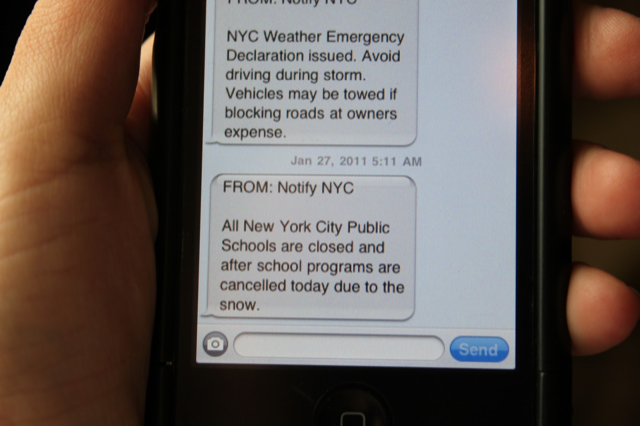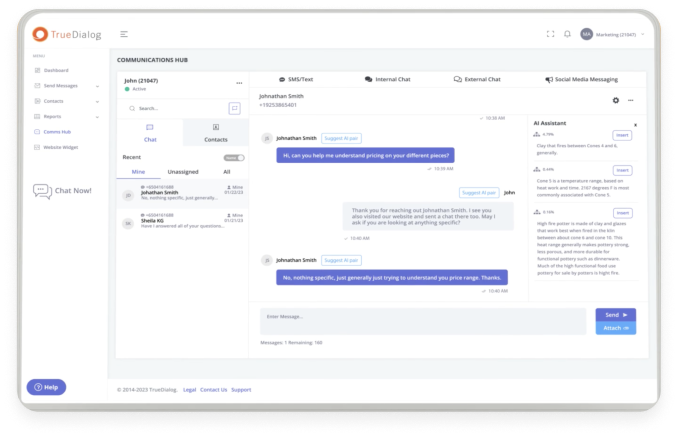Life inevitably throws us curve balls. Hazardous weather may cause an event to be delayed or canceled. A natural disaster may cause a widespread outage or leave behind damage. Campus violence or crime may put people in extreme danger. Even something as mundane as a technical difficulty may cripple essential functions. In these circumstances, students and faculty need to be informed. When time is of the essence, the most reliable way to instantly inform people of circumstantial changes is an SMS emergency alert notification system.
Before we dive into some of the best practices for setting up your urgent alert notification system, let’s answer the question of why we should use SMS / Text for alerts.
Benefits of SMS Urgent Alert Notifications:
- SMS texts can be broadcasted to a large group in a matter of seconds
- SMS text is the preferred method of communication among college students
- Open rates for texts are at about 99%, while open rates for emails are at about 15%
- Approximately 90% of texts are read in under 3 minutes
- SMS provides no requirement for an internet connection to receive an alert
- SMS will often work even when voice circuits are overloaded
- SMS provides receipt confirmation to show your message was successfully delivered
- Some systems, like TrueDialog’s, allow recipients to discretely text back to the administrator (1-to-1) with live updates.
It’s clear that SMS text is opening doors for rapid information sharing, as well as improving overall safety and security on campus. So, if you’re in the midst of developing (or improving upon) your urgent text system, here is some insight on the best practices.
Top 5 Best Practices for Creating an SMS Alert Notification System:
1. Determine who has the authority to send alerts
First, develop a protocol that establishes who exactly should be sending which type of alert, and under which circumstances. Only key people should be given the capability to send mass alerts, so start by building your team. Many alert notification systems will allow you to customize the rights and restrictions for each administrator.
2. Prewrite clear and concise messages
Spend some time carving out “canned” messages you know may be needed, such as campus closings due to severe weather. Certainly pieces of information within the message will need to be changed once an actual situation arises, but it’s helpful to turn to an existing template during a critical situation.
3. Promote your Urgent Alert Notification System
One of the easiest ways to build your database is to include a subscription form with enrollment materials for new students. Ensure both faculty and students know how the SMS Alert System works, and educate them on how they can reach campus security during an emergency via text.
4. Regularly train faculty and test the system
More than likely, your university won’t need to send out alert notification systems on a regular basis. As time passes in between each send, it’s easy for urgent alert administrators to forget how to use the features of the system. Periodically, you should conduct mock drills with faculty, and review the protocols your university has established.
5. Be conscious of how frequently the urgent alert notification system is used
Be courteous of your students and faculty by only sending urgent alert text messages that are absolutely needed. Remember not to overuse the system, because if students feel they are receiving too many alerts, they may fall into the habit of ignoring them. In order to avoid diminishing the importance of your messages, never blast your entire list (unless it is a major emergency, such as a campus shooting). Segment your list and only send an alert to the people who would be impacted depending on the situation.
Conclusion:
Remember, the benefits of having a solid alert notification system in place at your university cannot be overstated, but there are important logistics that need to be sorted through in order to put a successful system in place. For more best practices download whitepaper, “Higher Education: Regulations to Know Before You Text”.
If you’re university is currently in the market for an SMS urgent alert solution, TrueDialog can help. Unlike other campus urgent alert solutions, with TrueDialog you can send mass SMS text, voice messages, email and social alerts in just one click. Additionally, you can continue the dialog, one-to-one, when students reply to your broadcast. Click here to learn more about the TrueDialog SMS text platform.
If you have questions, we’re happy to help. Call 512-501-5947 or Text “Easy” to 370370.
Disclaimer: This article is provided for informational and educational purposes only and nothing herein constitutes legal advice. The samples, suggestions, best practices and other information detailed here are provided as general background information only and may or may not be appropriate for your particular situation. You should not act or rely on any information in this document without first seeking the advice of an attorney, and you agree that neither TrueDialog nor its agents shall have any liability with respect to actions taken or not taken based on this information to the fullest extent permitted by law.





